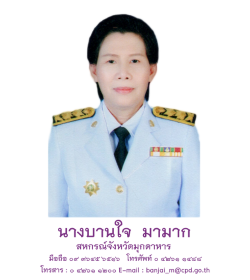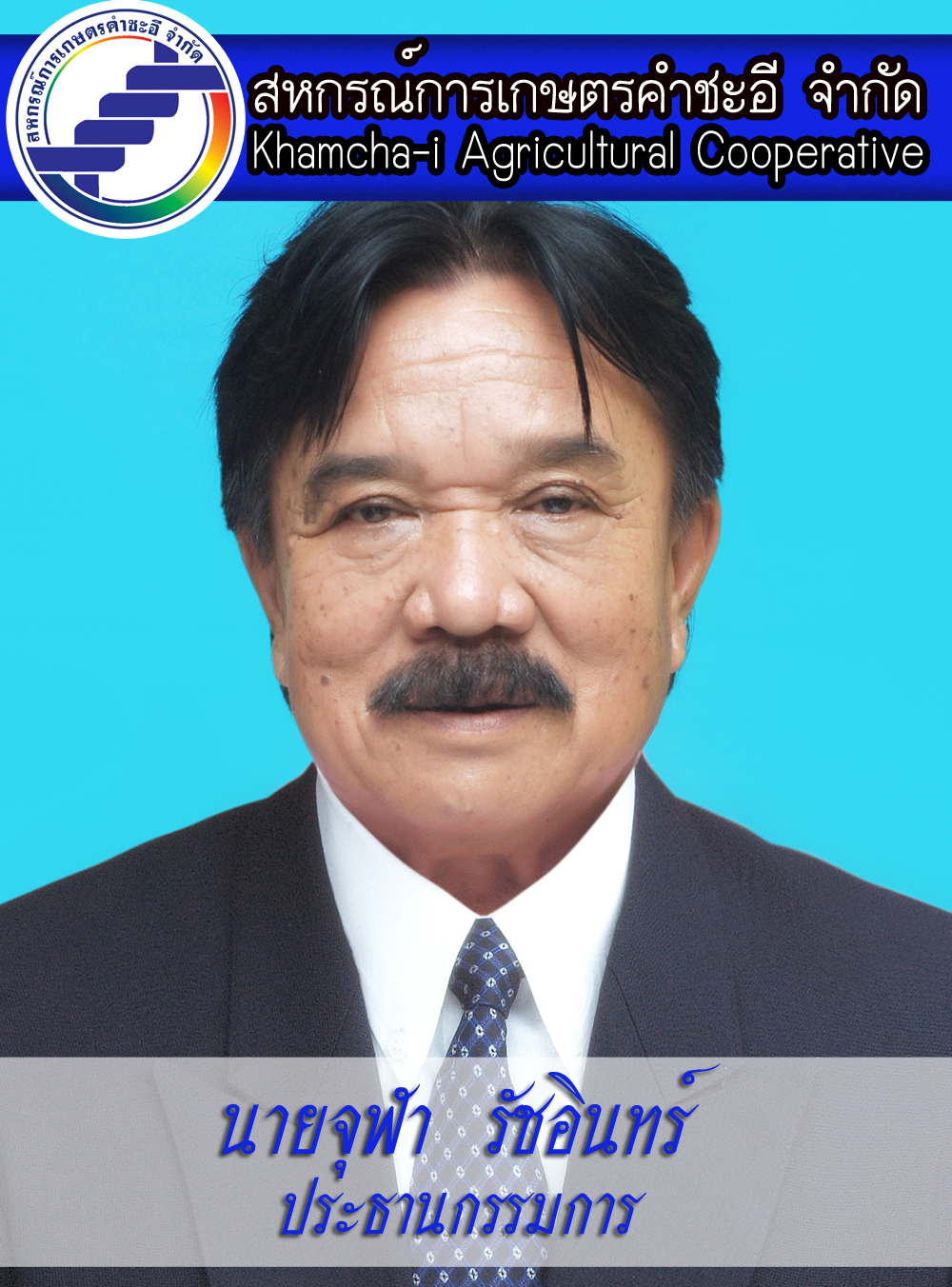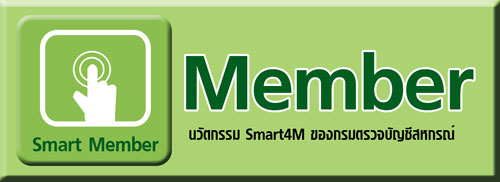×
ยินดีต้อนรับสู่ ฟอรัม Kunena!
อยากรู้จังเลยว่าคุณชอบอะไร รู้จักกับที่นี่ได้อย่างไร และสาเหตุจูงใจอะไรจึงลงทะเบียนเป็นสมาชิกกับทางเรา ช่วยแจ้งให้เราได้ทราบหน่อยได้ไหม
ยินดีต้อนรับสมาชิกใหม่ทุกท่าน และหวังว่าทางเราจะได้รับใช้คุณเยี่ยงนี้ตลอดไป
อยากรู้จังเลยว่าคุณชอบอะไร รู้จักกับที่นี่ได้อย่างไร และสาเหตุจูงใจอะไรจึงลงทะเบียนเป็นสมาชิกกับทางเรา ช่วยแจ้งให้เราได้ทราบหน่อยได้ไหม
ยินดีต้อนรับสมาชิกใหม่ทุกท่าน และหวังว่าทางเราจะได้รับใช้คุณเยี่ยงนี้ตลอดไป
скупка dji
- WilliamCah
- Topic Author
- Visitor
-

2 weeks 3 days ago #2654412
by WilliamCah
Replied by WilliamCah on topic kraken darknet
What the rising popularity of Yemeni coffee shops says about third places
<a href=https://kr13at.cc>kraken at
The most popular spot on a late Friday night in a pocket of Manhattan’s West Village isn’t a trendy bar or a Michelin-starred restaurant but a Yemeni coffee house chain strictly serving coffee, tea and pastries.
A step into Qahwah House on Carmine Street offers a rich whiff of cardamom, Arabic music and crowds of people both at tables and in line to order. The energy spills over into the sidewalk, where some begin performing a Levantine folk dance known as dabke. It’s a snapshot of various Eastern cultures; Arabic, Farsi and Urdu fill the air, and some customers don traditional attire.
kr13at.cc
kraken shop
Qahwah House is just one of a string of Yemeni coffee chains that originated in the Arab-populated Detroit area and are rapidly springing up across the country, often where there are significant Middle Eastern and Muslim populations. Nineteen Qahwah House locations are open across seven states, with more under construction and expected to open this year. Another chain, Haraz, opened this month in the pricey SoHo neighborhood in Manhattan, with at least six more in the region planned in the next two years. Times Square will be home to two other chains, MOKAFE and Qamaria Yemeni Coffee Co.
The rapid expansion of these shops underscores the demand for late-night social spots for not only young Muslims and Middle Easterners, but also younger people who are looking for a non-digital third space where they can hang out without alcohol or having to yell over loud music.
They don’t have many other options. Malls, a traditional third place for young people, are growing more and more unpopular. Chains like Starbucks have become more like take-out counters. Alcohol-free lifestyles are growing even for those outside of the Muslim faith, which many practicing the religion already take part in.
So for many young people in urban areas, especially those from immigrant communities looking for a way to connect to their cultures, it’s a great option.
<a href=https://kr13at.cc>kraken at
The most popular spot on a late Friday night in a pocket of Manhattan’s West Village isn’t a trendy bar or a Michelin-starred restaurant but a Yemeni coffee house chain strictly serving coffee, tea and pastries.
A step into Qahwah House on Carmine Street offers a rich whiff of cardamom, Arabic music and crowds of people both at tables and in line to order. The energy spills over into the sidewalk, where some begin performing a Levantine folk dance known as dabke. It’s a snapshot of various Eastern cultures; Arabic, Farsi and Urdu fill the air, and some customers don traditional attire.
kr13at.cc
kraken shop
Qahwah House is just one of a string of Yemeni coffee chains that originated in the Arab-populated Detroit area and are rapidly springing up across the country, often where there are significant Middle Eastern and Muslim populations. Nineteen Qahwah House locations are open across seven states, with more under construction and expected to open this year. Another chain, Haraz, opened this month in the pricey SoHo neighborhood in Manhattan, with at least six more in the region planned in the next two years. Times Square will be home to two other chains, MOKAFE and Qamaria Yemeni Coffee Co.
The rapid expansion of these shops underscores the demand for late-night social spots for not only young Muslims and Middle Easterners, but also younger people who are looking for a non-digital third space where they can hang out without alcohol or having to yell over loud music.
They don’t have many other options. Malls, a traditional third place for young people, are growing more and more unpopular. Chains like Starbucks have become more like take-out counters. Alcohol-free lifestyles are growing even for those outside of the Muslim faith, which many practicing the religion already take part in.
So for many young people in urban areas, especially those from immigrant communities looking for a way to connect to their cultures, it’s a great option.
Reply to WilliamCah
- DavidIndep
- Topic Author
- Visitor
-

2 weeks 3 days ago #2654614
by DavidIndep
Replied by DavidIndep on topic kraken официальный сайт
Dodgers star Shohei Ohtani suffers left shoulder injury during Game 2 of the World Series
<a href=https://kra012.cc>kra13.cc
Los Angeles Dodgers superstar Shohei Ohtani suffered a shoulder injury before the Dodgers’ 4-2 win over the New York Yankees in Game 2 of the World Series Saturday.
The Japanese slugger sustained a left shoulder subluxation and will undergo more testing, Los Angeles Dodgers manager Dave Roberts said after the game, adding that the team is however “encouraged” about the injury.
kra012.cc
kra14.cc
“The strength was great,” Roberts told reporters. “The range of motion good. So, we’re encouraged. But obviously I can’t speculate because we don’t get the scans yet. So, once we get the scans, we’ll know more. Again, with the strength, the range of motion good, that’s certainly a positive.
A shoulder subluxation occurs when “the humerus partially slides in and out of place quickly,” according to Johns Hopkins Medicine.
With the Dodgers up 4-1 in the bottom of the seventh inning, Ohtani attempted to steal second base but was thrown out to end the inning. Ohtani, however, stayed on the ground grimacing in pain and eventually walked off the field with trainers holding his left arm.
“Obviously when you get any one of your players that goes down, it’s concerning,” Roberts said. “But after kind of the range of motion, the strength test, I felt much better about it.”
According to the FOX broadcast, microphones picked up a conversation between Ohtani and trainers saying that his left shoulder appears to have popped out of its socket.
This weekend’s playoffs mark Ohtani’s first appearance in the postseason after he missed out in each of his six seasons with the Los Angeles Angels.
The star player is riding on a series of remarkable accomplishments in recent months, including hitting his 50th homer of the season and stealing his 50th base in the Dodgers’ victory over the Miami Marlins last Thursday. Ohtani went on to rack up his 51st of each stat by the end of the contest.
<a href=https://kra012.cc>kra13.cc
Los Angeles Dodgers superstar Shohei Ohtani suffered a shoulder injury before the Dodgers’ 4-2 win over the New York Yankees in Game 2 of the World Series Saturday.
The Japanese slugger sustained a left shoulder subluxation and will undergo more testing, Los Angeles Dodgers manager Dave Roberts said after the game, adding that the team is however “encouraged” about the injury.
kra012.cc
kra14.cc
“The strength was great,” Roberts told reporters. “The range of motion good. So, we’re encouraged. But obviously I can’t speculate because we don’t get the scans yet. So, once we get the scans, we’ll know more. Again, with the strength, the range of motion good, that’s certainly a positive.
A shoulder subluxation occurs when “the humerus partially slides in and out of place quickly,” according to Johns Hopkins Medicine.
With the Dodgers up 4-1 in the bottom of the seventh inning, Ohtani attempted to steal second base but was thrown out to end the inning. Ohtani, however, stayed on the ground grimacing in pain and eventually walked off the field with trainers holding his left arm.
“Obviously when you get any one of your players that goes down, it’s concerning,” Roberts said. “But after kind of the range of motion, the strength test, I felt much better about it.”
According to the FOX broadcast, microphones picked up a conversation between Ohtani and trainers saying that his left shoulder appears to have popped out of its socket.
This weekend’s playoffs mark Ohtani’s first appearance in the postseason after he missed out in each of his six seasons with the Los Angeles Angels.
The star player is riding on a series of remarkable accomplishments in recent months, including hitting his 50th homer of the season and stealing his 50th base in the Dodgers’ victory over the Miami Marlins last Thursday. Ohtani went on to rack up his 51st of each stat by the end of the contest.
Reply to DavidIndep
- Williewag
- Topic Author
- Visitor
-

2 weeks 3 days ago #2654648
by Williewag
Replied by Williewag on topic kraken даркнет
Dodgers star Shohei Ohtani suffers left shoulder injury during Game 2 of the World Series
<a href=https://kra012.cc>kraken магазин
Los Angeles Dodgers superstar Shohei Ohtani suffered a shoulder injury before the Dodgers’ 4-2 win over the New York Yankees in Game 2 of the World Series Saturday.
The Japanese slugger sustained a left shoulder subluxation and will undergo more testing, Los Angeles Dodgers manager Dave Roberts said after the game, adding that the team is however “encouraged” about the injury.
kra012.cc
kra14 cc
“The strength was great,” Roberts told reporters. “The range of motion good. So, we’re encouraged. But obviously I can’t speculate because we don’t get the scans yet. So, once we get the scans, we’ll know more. Again, with the strength, the range of motion good, that’s certainly a positive.
A shoulder subluxation occurs when “the humerus partially slides in and out of place quickly,” according to Johns Hopkins Medicine.
With the Dodgers up 4-1 in the bottom of the seventh inning, Ohtani attempted to steal second base but was thrown out to end the inning. Ohtani, however, stayed on the ground grimacing in pain and eventually walked off the field with trainers holding his left arm.
“Obviously when you get any one of your players that goes down, it’s concerning,” Roberts said. “But after kind of the range of motion, the strength test, I felt much better about it.”
According to the FOX broadcast, microphones picked up a conversation between Ohtani and trainers saying that his left shoulder appears to have popped out of its socket.
This weekend’s playoffs mark Ohtani’s first appearance in the postseason after he missed out in each of his six seasons with the Los Angeles Angels.
The star player is riding on a series of remarkable accomplishments in recent months, including hitting his 50th homer of the season and stealing his 50th base in the Dodgers’ victory over the Miami Marlins last Thursday. Ohtani went on to rack up his 51st of each stat by the end of the contest.
<a href=https://kra012.cc>kraken магазин
Los Angeles Dodgers superstar Shohei Ohtani suffered a shoulder injury before the Dodgers’ 4-2 win over the New York Yankees in Game 2 of the World Series Saturday.
The Japanese slugger sustained a left shoulder subluxation and will undergo more testing, Los Angeles Dodgers manager Dave Roberts said after the game, adding that the team is however “encouraged” about the injury.
kra012.cc
kra14 cc
“The strength was great,” Roberts told reporters. “The range of motion good. So, we’re encouraged. But obviously I can’t speculate because we don’t get the scans yet. So, once we get the scans, we’ll know more. Again, with the strength, the range of motion good, that’s certainly a positive.
A shoulder subluxation occurs when “the humerus partially slides in and out of place quickly,” according to Johns Hopkins Medicine.
With the Dodgers up 4-1 in the bottom of the seventh inning, Ohtani attempted to steal second base but was thrown out to end the inning. Ohtani, however, stayed on the ground grimacing in pain and eventually walked off the field with trainers holding his left arm.
“Obviously when you get any one of your players that goes down, it’s concerning,” Roberts said. “But after kind of the range of motion, the strength test, I felt much better about it.”
According to the FOX broadcast, microphones picked up a conversation between Ohtani and trainers saying that his left shoulder appears to have popped out of its socket.
This weekend’s playoffs mark Ohtani’s first appearance in the postseason after he missed out in each of his six seasons with the Los Angeles Angels.
The star player is riding on a series of remarkable accomplishments in recent months, including hitting his 50th homer of the season and stealing his 50th base in the Dodgers’ victory over the Miami Marlins last Thursday. Ohtani went on to rack up his 51st of each stat by the end of the contest.
Reply to Williewag
- ThomasBiz
- Topic Author
- Visitor
-

2 weeks 3 days ago #2654777
by ThomasBiz
Replied by ThomasBiz on topic kraken darknet onion
Dodgers star Shohei Ohtani suffers left shoulder injury during Game 2 of the World Series
<a href=https://kra012.cc>kraken сайт
Los Angeles Dodgers superstar Shohei Ohtani suffered a shoulder injury before the Dodgers’ 4-2 win over the New York Yankees in Game 2 of the World Series Saturday.
The Japanese slugger sustained a left shoulder subluxation and will undergo more testing, Los Angeles Dodgers manager Dave Roberts said after the game, adding that the team is however “encouraged” about the injury.
kra012.cc
kraken
“The strength was great,” Roberts told reporters. “The range of motion good. So, we’re encouraged. But obviously I can’t speculate because we don’t get the scans yet. So, once we get the scans, we’ll know more. Again, with the strength, the range of motion good, that’s certainly a positive.
A shoulder subluxation occurs when “the humerus partially slides in and out of place quickly,” according to Johns Hopkins Medicine.
With the Dodgers up 4-1 in the bottom of the seventh inning, Ohtani attempted to steal second base but was thrown out to end the inning. Ohtani, however, stayed on the ground grimacing in pain and eventually walked off the field with trainers holding his left arm.
“Obviously when you get any one of your players that goes down, it’s concerning,” Roberts said. “But after kind of the range of motion, the strength test, I felt much better about it.”
According to the FOX broadcast, microphones picked up a conversation between Ohtani and trainers saying that his left shoulder appears to have popped out of its socket.
This weekend’s playoffs mark Ohtani’s first appearance in the postseason after he missed out in each of his six seasons with the Los Angeles Angels.
The star player is riding on a series of remarkable accomplishments in recent months, including hitting his 50th homer of the season and stealing his 50th base in the Dodgers’ victory over the Miami Marlins last Thursday. Ohtani went on to rack up his 51st of each stat by the end of the contest.
<a href=https://kra012.cc>kraken сайт
Los Angeles Dodgers superstar Shohei Ohtani suffered a shoulder injury before the Dodgers’ 4-2 win over the New York Yankees in Game 2 of the World Series Saturday.
The Japanese slugger sustained a left shoulder subluxation and will undergo more testing, Los Angeles Dodgers manager Dave Roberts said after the game, adding that the team is however “encouraged” about the injury.
kra012.cc
kraken
“The strength was great,” Roberts told reporters. “The range of motion good. So, we’re encouraged. But obviously I can’t speculate because we don’t get the scans yet. So, once we get the scans, we’ll know more. Again, with the strength, the range of motion good, that’s certainly a positive.
A shoulder subluxation occurs when “the humerus partially slides in and out of place quickly,” according to Johns Hopkins Medicine.
With the Dodgers up 4-1 in the bottom of the seventh inning, Ohtani attempted to steal second base but was thrown out to end the inning. Ohtani, however, stayed on the ground grimacing in pain and eventually walked off the field with trainers holding his left arm.
“Obviously when you get any one of your players that goes down, it’s concerning,” Roberts said. “But after kind of the range of motion, the strength test, I felt much better about it.”
According to the FOX broadcast, microphones picked up a conversation between Ohtani and trainers saying that his left shoulder appears to have popped out of its socket.
This weekend’s playoffs mark Ohtani’s first appearance in the postseason after he missed out in each of his six seasons with the Los Angeles Angels.
The star player is riding on a series of remarkable accomplishments in recent months, including hitting his 50th homer of the season and stealing his 50th base in the Dodgers’ victory over the Miami Marlins last Thursday. Ohtani went on to rack up his 51st of each stat by the end of the contest.
Reply to ThomasBiz
- JamesHen
- Topic Author
- Visitor
-

2 weeks 2 days ago #2655077
by JamesHen
Replied by JamesHen on topic kraken marketplace
What the rising popularity of Yemeni coffee shops says about third places
<a href=https://kr13at.cc>кракен ссылка
The most popular spot on a late Friday night in a pocket of Manhattan’s West Village isn’t a trendy bar or a Michelin-starred restaurant but a Yemeni coffee house chain strictly serving coffee, tea and pastries.
A step into Qahwah House on Carmine Street offers a rich whiff of cardamom, Arabic music and crowds of people both at tables and in line to order. The energy spills over into the sidewalk, where some begin performing a Levantine folk dance known as dabke. It’s a snapshot of various Eastern cultures; Arabic, Farsi and Urdu fill the air, and some customers don traditional attire.
kr13at.cc
kraken вход
Qahwah House is just one of a string of Yemeni coffee chains that originated in the Arab-populated Detroit area and are rapidly springing up across the country, often where there are significant Middle Eastern and Muslim populations. Nineteen Qahwah House locations are open across seven states, with more under construction and expected to open this year. Another chain, Haraz, opened this month in the pricey SoHo neighborhood in Manhattan, with at least six more in the region planned in the next two years. Times Square will be home to two other chains, MOKAFE and Qamaria Yemeni Coffee Co.
The rapid expansion of these shops underscores the demand for late-night social spots for not only young Muslims and Middle Easterners, but also younger people who are looking for a non-digital third space where they can hang out without alcohol or having to yell over loud music.
They don’t have many other options. Malls, a traditional third place for young people, are growing more and more unpopular. Chains like Starbucks have become more like take-out counters. Alcohol-free lifestyles are growing even for those outside of the Muslim faith, which many practicing the religion already take part in.
So for many young people in urban areas, especially those from immigrant communities looking for a way to connect to their cultures, it’s a great option.
<a href=https://kr13at.cc>кракен ссылка
The most popular spot on a late Friday night in a pocket of Manhattan’s West Village isn’t a trendy bar or a Michelin-starred restaurant but a Yemeni coffee house chain strictly serving coffee, tea and pastries.
A step into Qahwah House on Carmine Street offers a rich whiff of cardamom, Arabic music and crowds of people both at tables and in line to order. The energy spills over into the sidewalk, where some begin performing a Levantine folk dance known as dabke. It’s a snapshot of various Eastern cultures; Arabic, Farsi and Urdu fill the air, and some customers don traditional attire.
kr13at.cc
kraken вход
Qahwah House is just one of a string of Yemeni coffee chains that originated in the Arab-populated Detroit area and are rapidly springing up across the country, often where there are significant Middle Eastern and Muslim populations. Nineteen Qahwah House locations are open across seven states, with more under construction and expected to open this year. Another chain, Haraz, opened this month in the pricey SoHo neighborhood in Manhattan, with at least six more in the region planned in the next two years. Times Square will be home to two other chains, MOKAFE and Qamaria Yemeni Coffee Co.
The rapid expansion of these shops underscores the demand for late-night social spots for not only young Muslims and Middle Easterners, but also younger people who are looking for a non-digital third space where they can hang out without alcohol or having to yell over loud music.
They don’t have many other options. Malls, a traditional third place for young people, are growing more and more unpopular. Chains like Starbucks have become more like take-out counters. Alcohol-free lifestyles are growing even for those outside of the Muslim faith, which many practicing the religion already take part in.
So for many young people in urban areas, especially those from immigrant communities looking for a way to connect to their cultures, it’s a great option.
Reply to JamesHen
- WilliamCah
- Topic Author
- Visitor
-

2 weeks 2 days ago #2655229
by WilliamCah
Replied by WilliamCah on topic kra at
What the rising popularity of Yemeni coffee shops says about third places
<a href=https://kr13at.cc>kra14 at
The most popular spot on a late Friday night in a pocket of Manhattan’s West Village isn’t a trendy bar or a Michelin-starred restaurant but a Yemeni coffee house chain strictly serving coffee, tea and pastries.
A step into Qahwah House on Carmine Street offers a rich whiff of cardamom, Arabic music and crowds of people both at tables and in line to order. The energy spills over into the sidewalk, where some begin performing a Levantine folk dance known as dabke. It’s a snapshot of various Eastern cultures; Arabic, Farsi and Urdu fill the air, and some customers don traditional attire.
kr13at.cc
kra15.cc
Qahwah House is just one of a string of Yemeni coffee chains that originated in the Arab-populated Detroit area and are rapidly springing up across the country, often where there are significant Middle Eastern and Muslim populations. Nineteen Qahwah House locations are open across seven states, with more under construction and expected to open this year. Another chain, Haraz, opened this month in the pricey SoHo neighborhood in Manhattan, with at least six more in the region planned in the next two years. Times Square will be home to two other chains, MOKAFE and Qamaria Yemeni Coffee Co.
The rapid expansion of these shops underscores the demand for late-night social spots for not only young Muslims and Middle Easterners, but also younger people who are looking for a non-digital third space where they can hang out without alcohol or having to yell over loud music.
They don’t have many other options. Malls, a traditional third place for young people, are growing more and more unpopular. Chains like Starbucks have become more like take-out counters. Alcohol-free lifestyles are growing even for those outside of the Muslim faith, which many practicing the religion already take part in.
So for many young people in urban areas, especially those from immigrant communities looking for a way to connect to their cultures, it’s a great option.
<a href=https://kr13at.cc>kra14 at
The most popular spot on a late Friday night in a pocket of Manhattan’s West Village isn’t a trendy bar or a Michelin-starred restaurant but a Yemeni coffee house chain strictly serving coffee, tea and pastries.
A step into Qahwah House on Carmine Street offers a rich whiff of cardamom, Arabic music and crowds of people both at tables and in line to order. The energy spills over into the sidewalk, where some begin performing a Levantine folk dance known as dabke. It’s a snapshot of various Eastern cultures; Arabic, Farsi and Urdu fill the air, and some customers don traditional attire.
kr13at.cc
kra15.cc
Qahwah House is just one of a string of Yemeni coffee chains that originated in the Arab-populated Detroit area and are rapidly springing up across the country, often where there are significant Middle Eastern and Muslim populations. Nineteen Qahwah House locations are open across seven states, with more under construction and expected to open this year. Another chain, Haraz, opened this month in the pricey SoHo neighborhood in Manhattan, with at least six more in the region planned in the next two years. Times Square will be home to two other chains, MOKAFE and Qamaria Yemeni Coffee Co.
The rapid expansion of these shops underscores the demand for late-night social spots for not only young Muslims and Middle Easterners, but also younger people who are looking for a non-digital third space where they can hang out without alcohol or having to yell over loud music.
They don’t have many other options. Malls, a traditional third place for young people, are growing more and more unpopular. Chains like Starbucks have become more like take-out counters. Alcohol-free lifestyles are growing even for those outside of the Muslim faith, which many practicing the religion already take part in.
So for many young people in urban areas, especially those from immigrant communities looking for a way to connect to their cultures, it’s a great option.
Reply to WilliamCah
Time to create page: 7.036 seconds












